Maverick Citizen
Building safe public spaces – a privately public affair
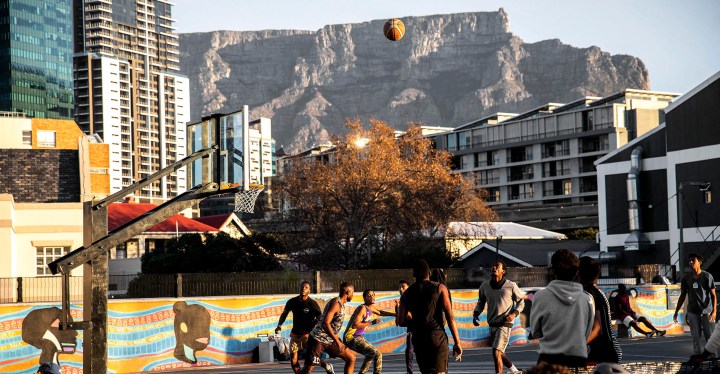
The value of public spaces for the physical and mental well-being of residents is being underlined through collective action and investment in parts of Cape Town. Successful models, such as Philippi Village and V&A Waterfront serve as inspiration for city-wide projects that could ultimately be interlinked through innovative city planning.
Marcela Guerrero Casas is a Programme Lead at the Western Cape Economic Development Partnership.
It is an understatement to say that Covid-19 highlighted the value of public space; in many ways, it made it clear that our mental and physical wellbeing depends on it. It also surfaced a layer of safety that many of us took for granted before. Safety, it turns out, includes guarding against physical harm, such as crime but also from invisible threats (e.g. viruses, loneliness) that affect our mental and social health.
Moreover, Covid-19 has shown us the best antidote to a pandemic is collective action. During lockdown, there has been a marked increased use of public space, as spaces for social connection as well as exercise. Creating and maintaining these spaces as welcoming and safe for all city residents is a priority for increased resilience. If working collaboratively is our most effective tool for collective impact, then how do we put this into practice to ensure that access to public spaces is ensured as a crucial aspect of our survival?
Some spaces in our city are perceived as public, and used by the public, but are privately owned. Two examples, one in the CBD and one in Philippi come to mind, which, though far from perfect, illustrate the importance of collaborative action to create spaces that support the health of city residents.
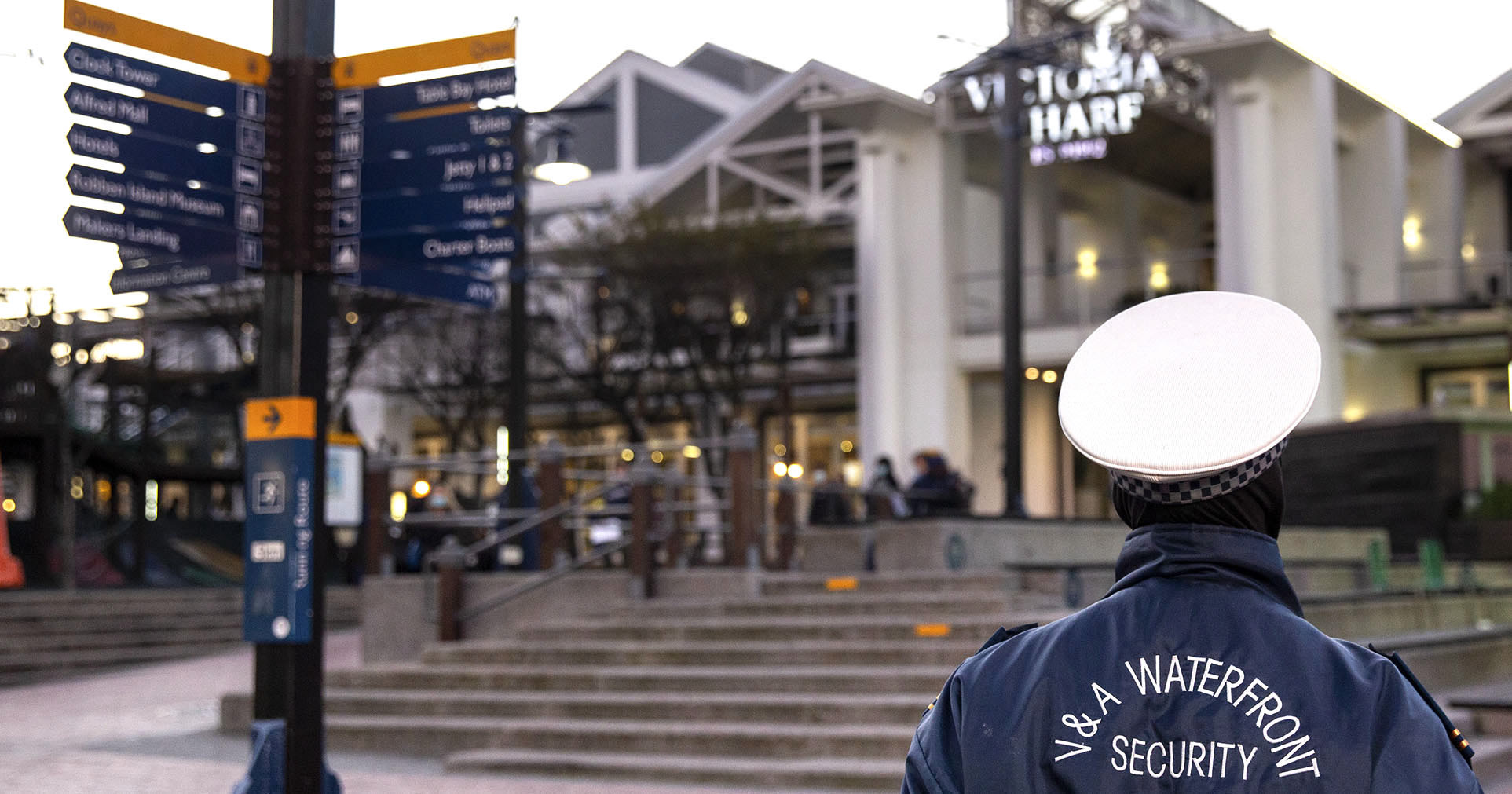
Safety at the V&A goes beyond security; it includes placemaking,
signage and programming such as busking and other forms of
public art. (Photo: Ashraf Hendricks)
On the surface, the waterfront in the centre of Cape Town and Philippi in the Cape Flats, have little in common. But in each instance, a private development actor has played an interesting role in designing “public space”. The Victoria & Alfred (V&A) in the former and Philippi Village in the latter, illustrate the tension but also the synergies between private and public and might highlight some lessons when we think of safety in other parts of our city.
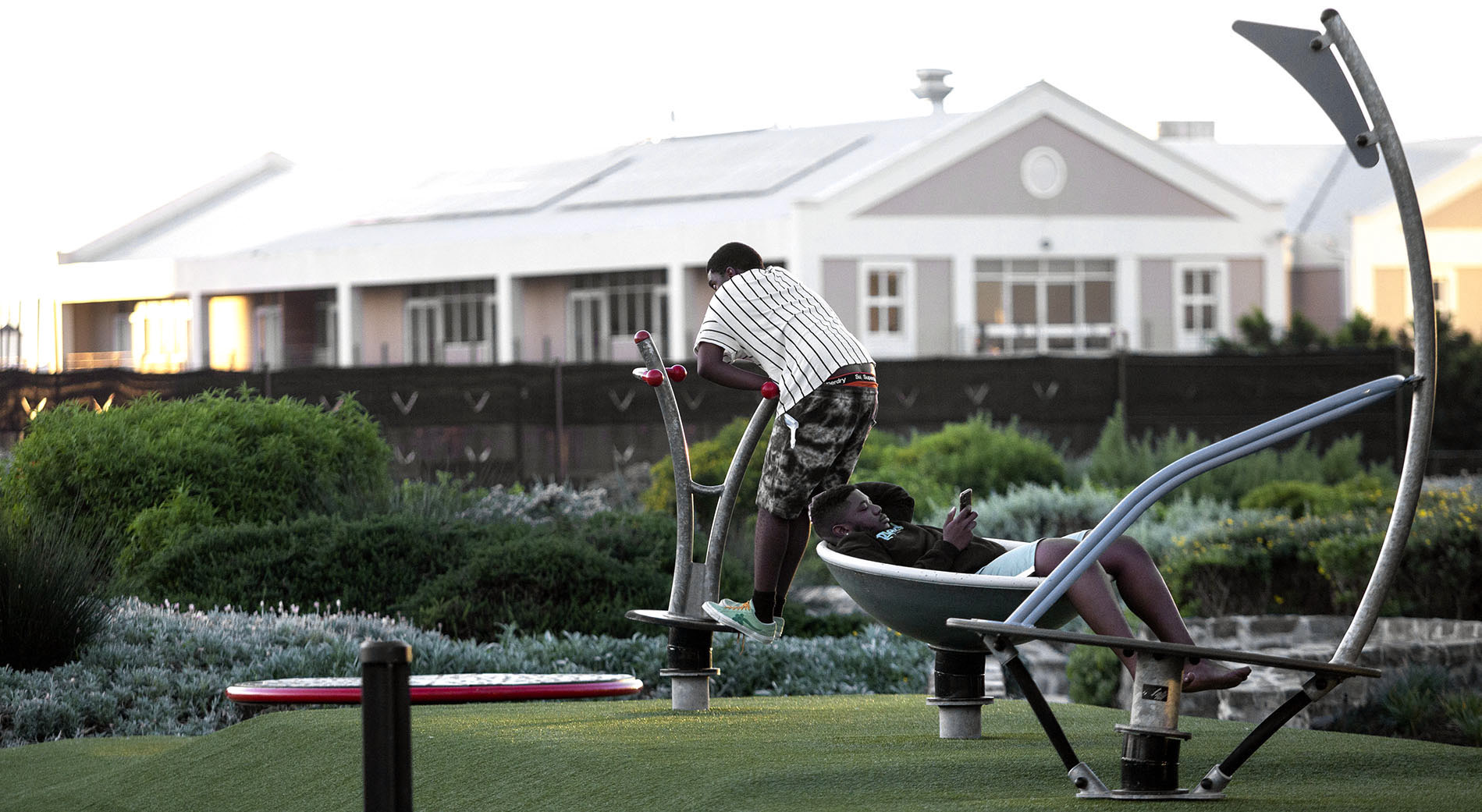
Outdoor equipment can help people feel welcome to play or just sit. (Photo: Ashraf Hendricks)
V&A: A shopping mall or a destination?
Established in 1988, the V&A expands across 123 hectares and has become one of the most prominent tourism features of Cape Town. It is not only popular amongst tourists, as a sunny weekend can attest. According to V&A figures, 45% of visitors come from across the city.
According to Sanette Ferreira and Rozitta de Villiers, the original purpose of the V&A Waterfront was to turn the harbour into a safe, commercially viable public space that could reconnect the waterfront with the city centre. And this continues to be the deliberate intention as explained by Development Director Mark Noble. “For the past 15 years, we have, through small- and large-scale interventions, worked to break down barriers and open up to the city.”
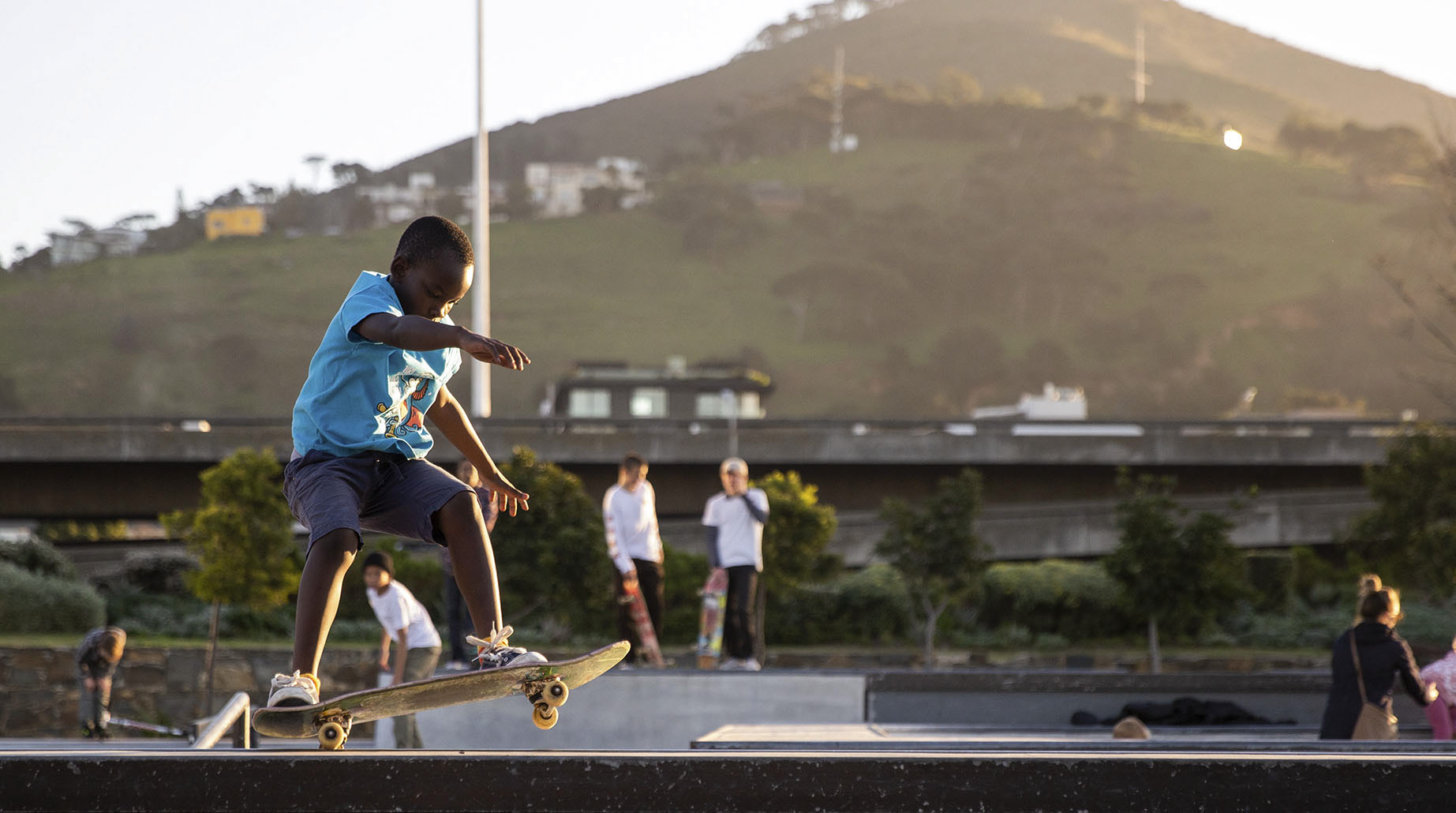
The skateboard park at the V&A is a vibrant public space at all times of the day.
(Photo: Ashraf Hendricks)
Safety in this endeavour is paramount and in fact, one of the “small-scale” interventions Noble refers to has to do with “softening the edges” by, for instance, introducing a security system that is not perceived as heavy policing. This perception of safety can often be more important than the actual level of security a place can provide.
Henry Mathys, senior manager of social impact at the V&A explains that since Covid, this has been an important driver in how they manage interventions across the precinct’s public spaces. “Large numbers of people, in the past, created a sense of safety. With the rise in Covid infections leading to a significant decrease in activity, there was a need to find ways of instilling public confidence to be in public spaces. Protocols for health, sanitation, disinfection, distancing and safety, supported with improved signage, contactless payment solutions and covid marshalls have been key to nudging desired behaviours across the property.”
One of the most visible components of the V&A’s programming around public space is busking; and even though it is not purely open to the public, as artists must follow a formal registration process, it does create a sense of life in a public space; which is rare in most other public spaces in Cape Town. Similarly, the energy created by the skatepark is rivalled by few other places in the city. Regardless of recent covid levels and restrictions, this is a space where you can count on finding people of various backgrounds; mostly young, freely enjoying the space.
Philippi Village: striking a balance between commercial and social mandates
Philippi Village was established across 12 hectares of space of what once was a cement factory, as an integrated community development hub, and started operating in 2005. The Village has undergone a number of changes under different types of management. Two years ago, Bushra Razack took over as CEO and has since worked to bring a stronger focus on the village’s social impact. She and her team have invested in deeper engagement with residents of neighbouring settlements as well as partners and tenants alike, and are in the process of creating a not for profit company (NPC) that will sit alongside the original Pty.
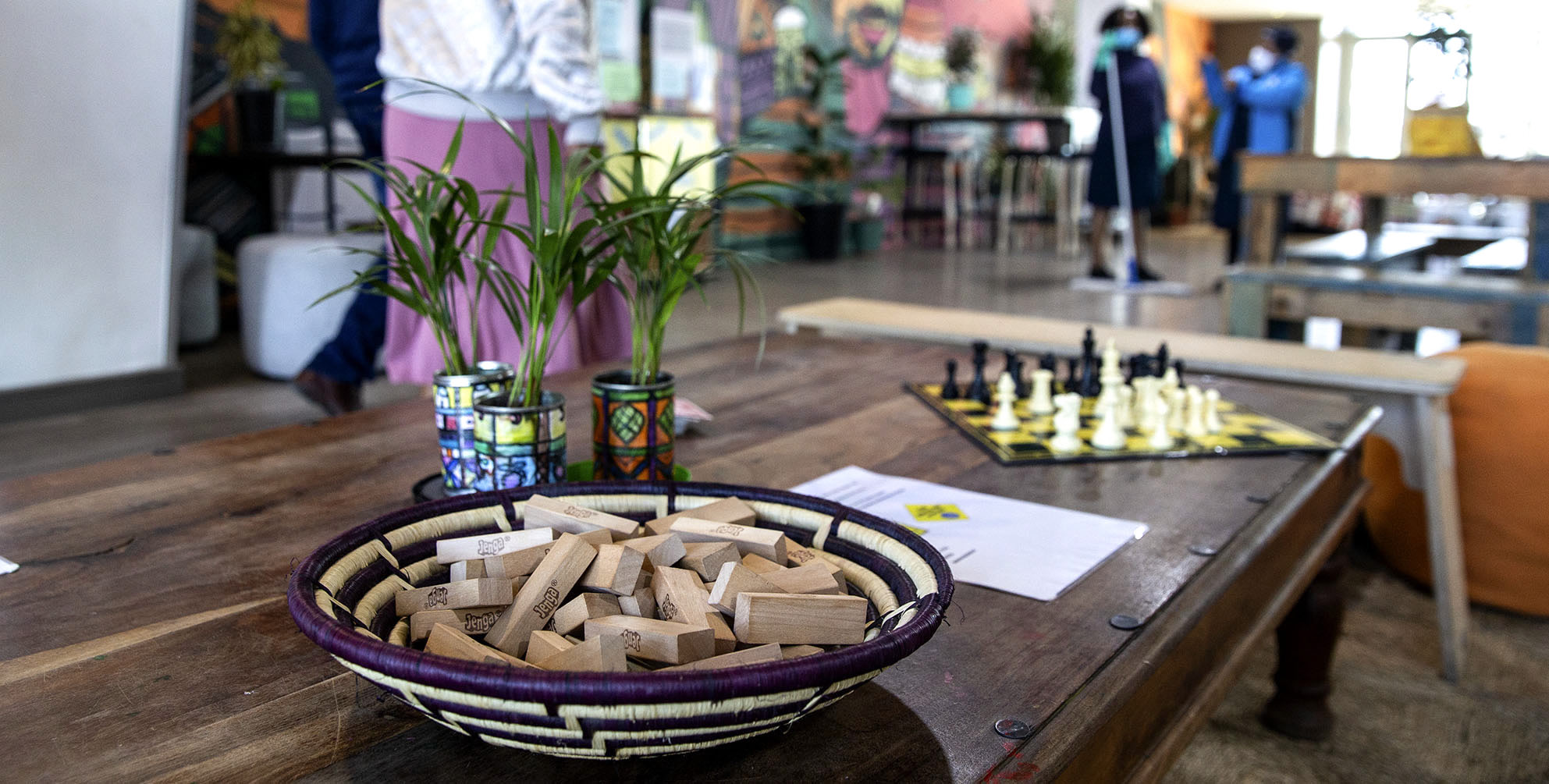
Games and art are a constant inside and outside the Philippi Village.
They help create a welcoming and ultimately, safe environment. (Photo: Ashraf Hendricks)
The objective of connecting with its surroundings is crucial for Philippi Village. From physical issues such as flooding, which happens frequently, to attempted land occupation of the space, Bushra points to how critical it is to ensure that the spaces blend into each other, physically and from a relational perspective. Thus, the co-creation of infrastructure, such as the upcoming 1.6km walkway which seeks to provide wellness as well as “passive surveillance” in the village, as well as the frequent mediated negotiations safety and community partners have led to prevent occupations, are paramount in the creation of safety.
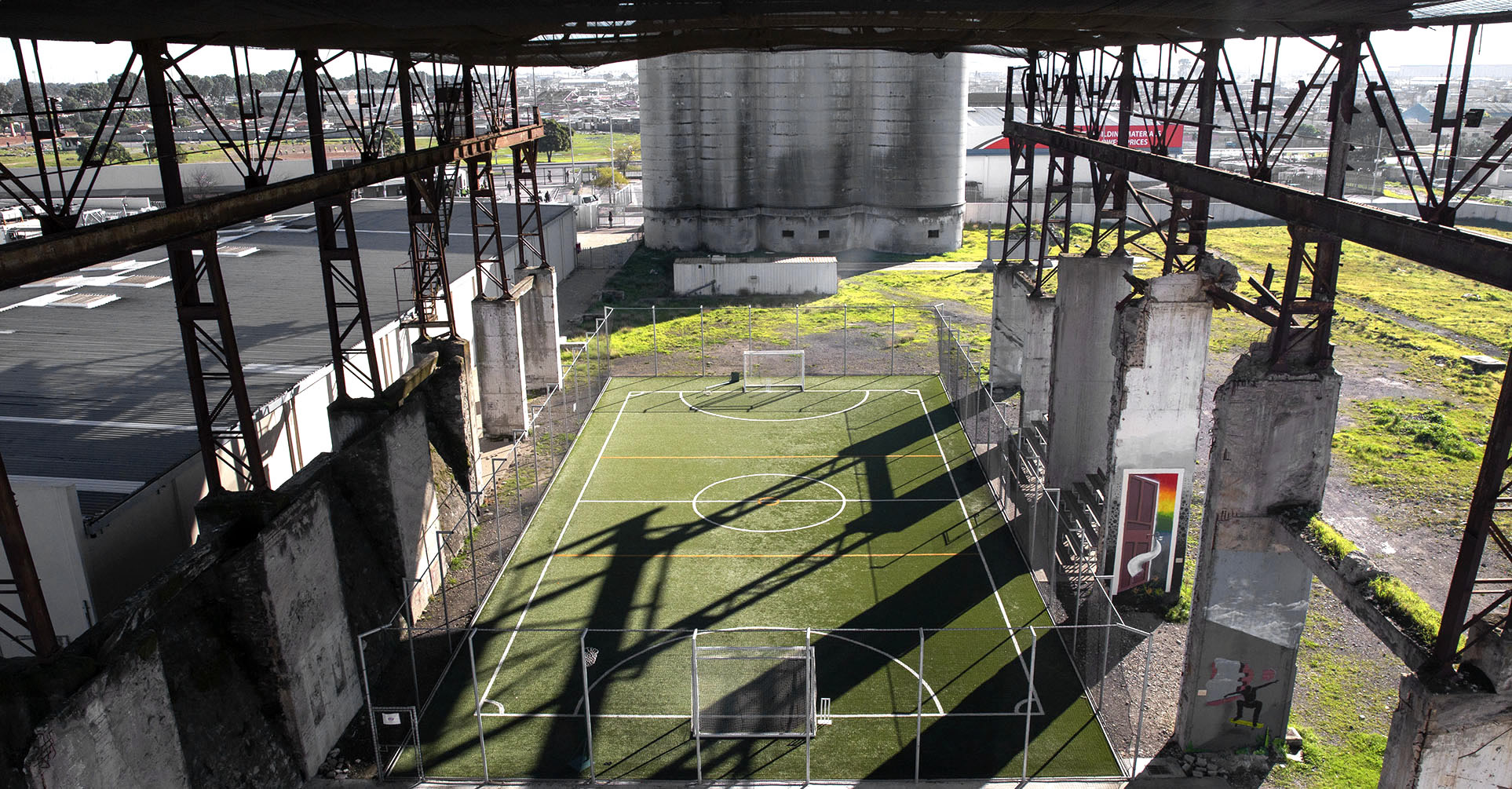
Because of Covid restrictions and threats of social unrest, a normally
vibrant soccer pitch and skateboard park sat empty for a brief period. (Photo: Ashraf Hendricks)
At Philippi Village there is also deliberate intent to think about security outside the conventional format of ‘policing.’ Though the premises are physically separated from the surrounding areas by walls; security has been trained in a community-based approach to ensure tenants feel safe while the community also feels welcome, and special attention is given to how they are dressed and how they interact with the public.
Safety goes well beyond security, and Covid gave impetus to the implementation of measures that turned the Village into a Covid-response centre, where food relief, education and other forms of support were accommodated. For Bushra, this was a good illustration of their approach: “safety is about being aware of what people are feeling and being able to respond to that,” she says.
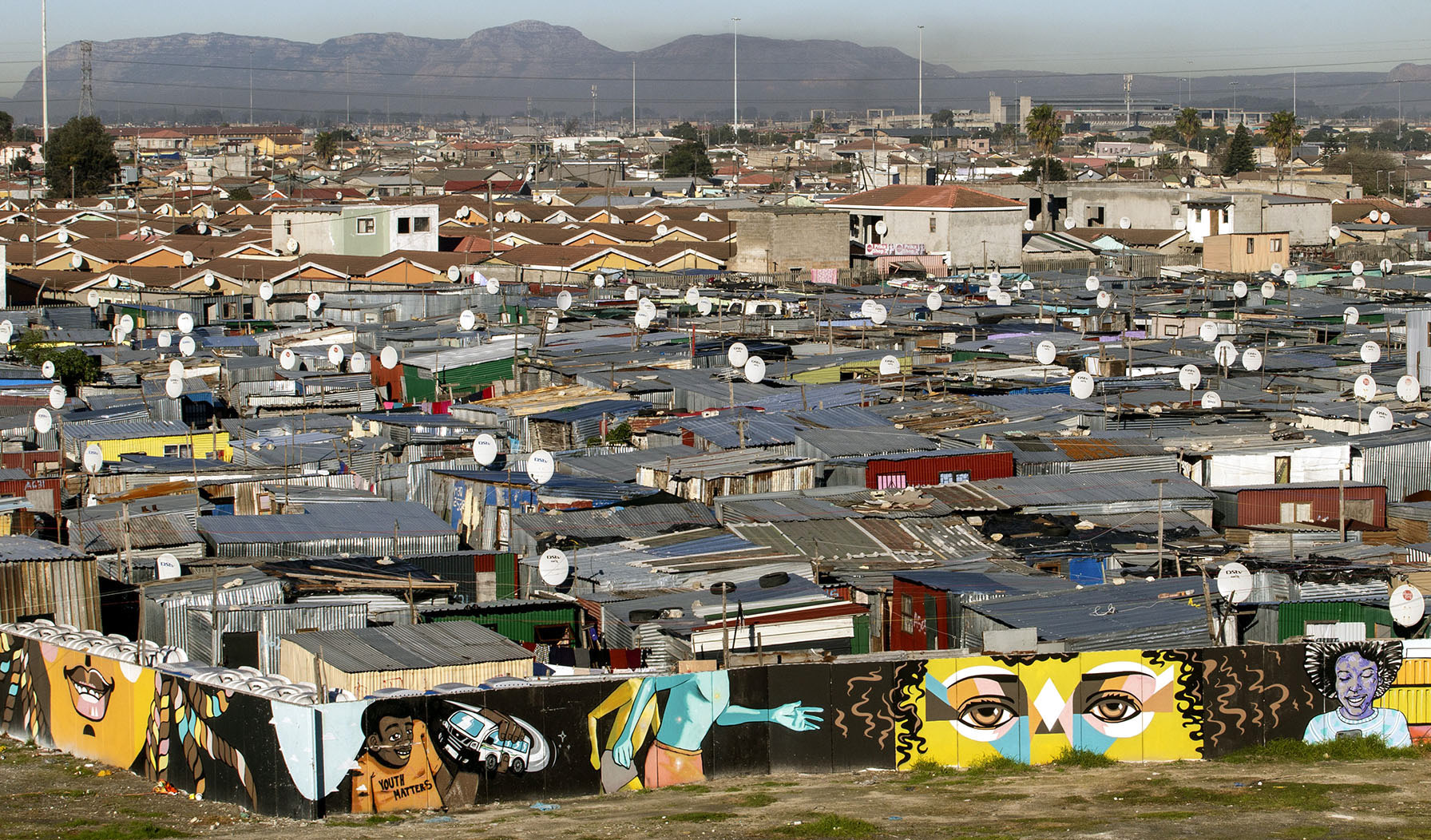
The mural dividing the Village from Philippi was co-designed with
residents. It serves the dual purpose of public art and safety. (Photo: Ashraf Hendricks)
Safety is also about finding ways to communicate effectively to find common ground and in this regard, arts and games feature as a tool to convene the neighbouring community. The colourful mural that separates the Village from a neighbouring informal settlement is the result of the way a solution was found after the wall was repeatedly torn down by neighbours. Bushra and her team saw an opportunity to engage neighbours in a collaborative project and through mural painting, they co-designed what has become a practical security tool with a deep meaning of partnership.
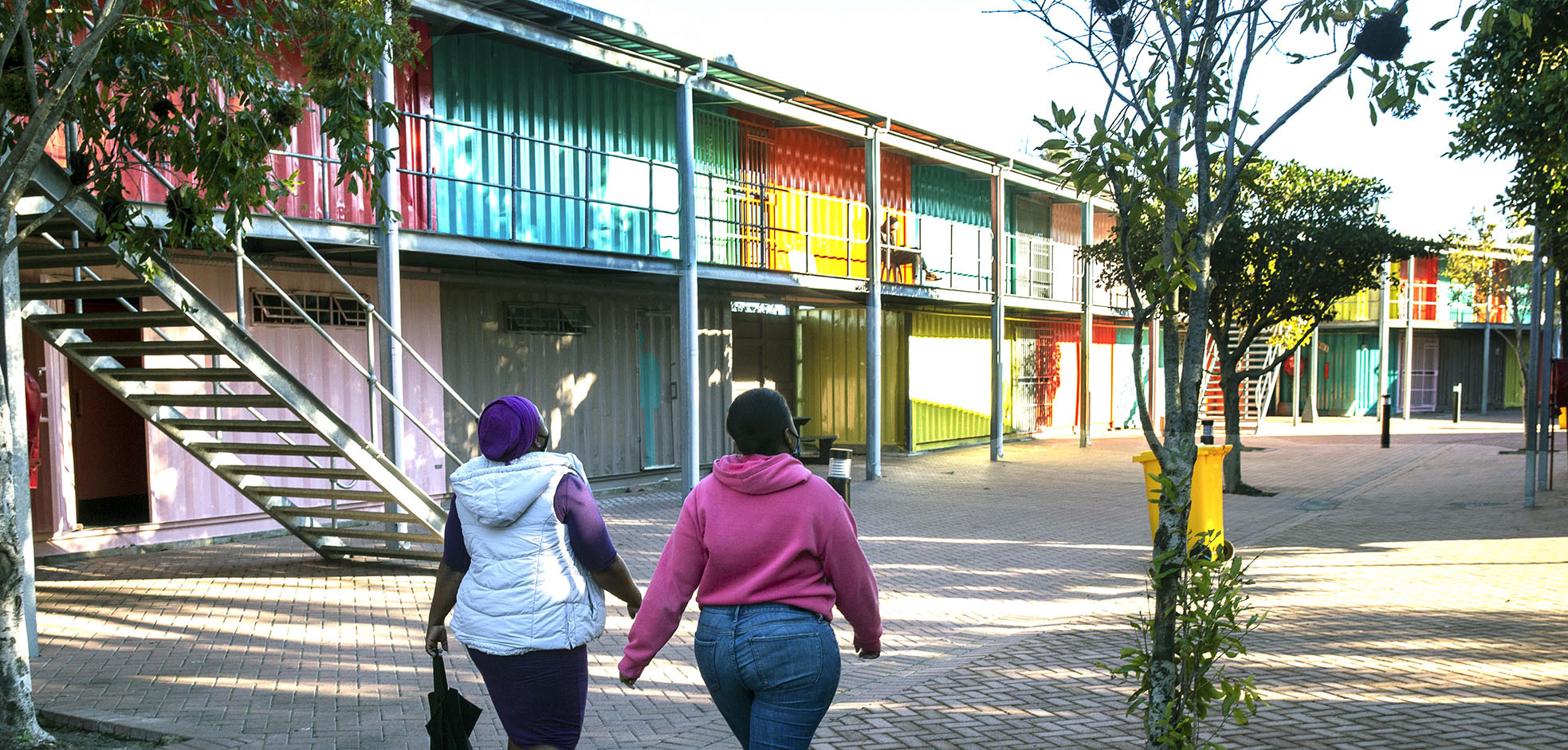
The Village has undergone a number of changes under different types of
management. Two years ago, Bushra Razack took over as CEO and has since
worked to bring a stronger focus on the village’s social impact; in addition to
its commercial imperative. (Photo: Ashraf Hendricks)
Lessons for Cape Town and beyond
What can be learnt from these two examples that could help other parts of Cape Town — and other cities — to create safer public spaces?
- Safety is about making people feel welcome and included
When people go to the V&A, they are not only going for the commercial offering. During level 4 restrictions, when restaurants were closed, the number of visitors decreased significantly; nevertheless, people could still be seen using spaces like the skatepark or simply sitting while eating a takeaway meal at the Nobel Square. Relatively simple actions such as outdoor seating and signposting can go a long way in showing people that they can use the space.
Often, this needs to be spelt out clearly so that people feel drawn in and invited. In other instances, it’s about finding out what neighbours want. In Philippi Village, the skatepark and football pitch attract a large number of children eager to play in a safe space. Similarly, the co-design of the walkway, a bicycle pump track and similar infrastructure expected to be in place in the coming months, are the result of thorough consultation which helped to surface the value residents of Philippi place on wellness.
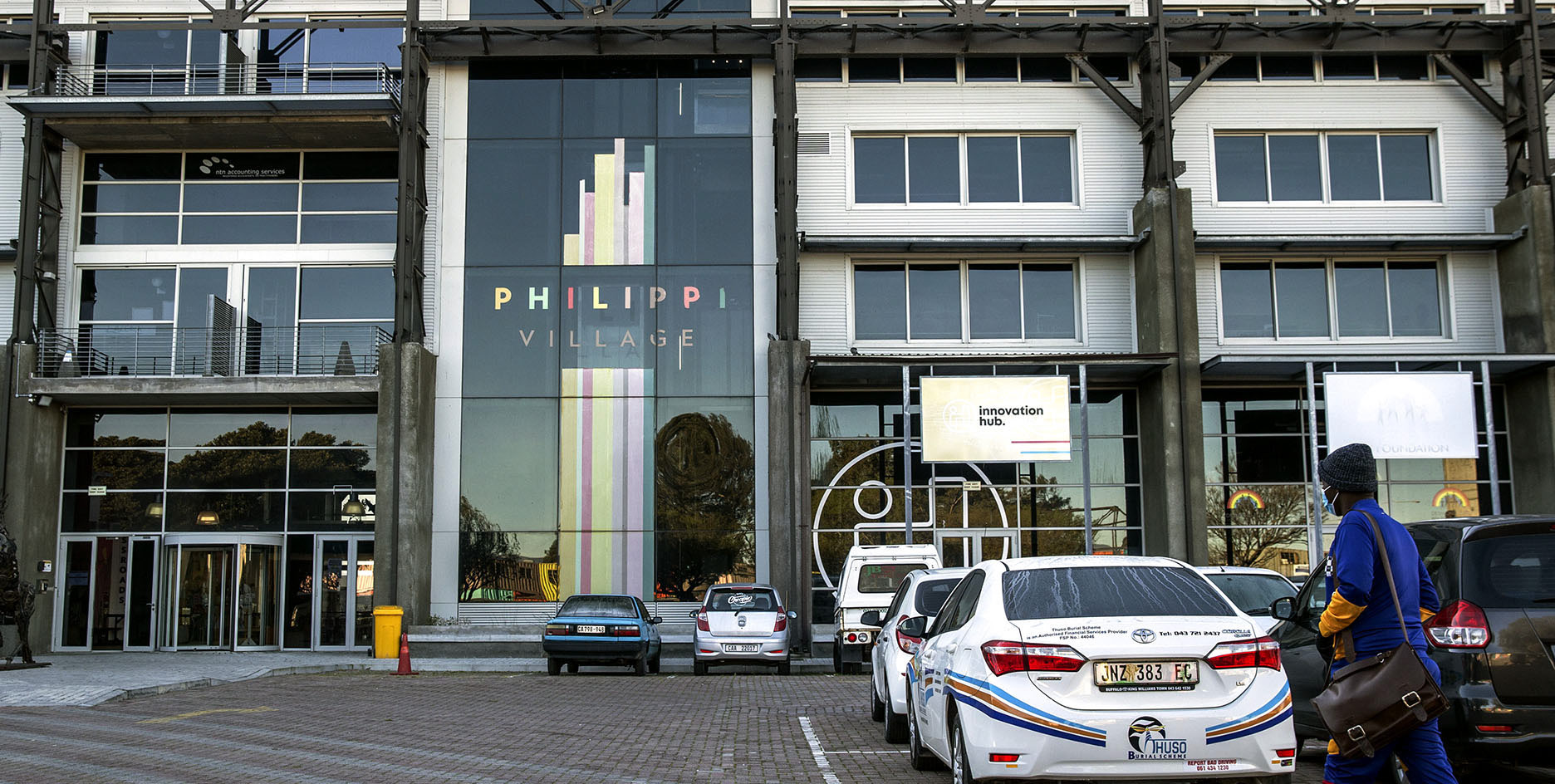
The Philippi Village was established as an integrated community
development hub, and started operating in 2005. (Photo: Ashraf Hendricks)
- Collaboration is key
In both examples, there are partners, investors, tenants, and the public; so, one could say there is a permanent state of co-creation of the spaces and the activities shaping them. Nevertheless, when it comes to formal partnerships, the challenges are clear. Collaboration is hard at the best of times, let alone in a city with so many pressing issues, competing interests, limited resources and divisive politics. No wonder, that as private entities, with the ability to make decisions internally; there is no strong drive to collaborate with local government — except when permits are required.
Still, there are relatively simple ways in which collaboration can and is happening in both places. In Philippi, for instance, the Village established a relationship with national government by becoming a national government sector education training facility, and according to Bushra this encouraged the City to engage and communicate more consistently. Furthermore, the local public library is housed within the Village; which makes the City of Cape Town a tenant, and with added vested interests, synergies grow.
- Learning goes both ways
Just like the private sector isn’t completely autonomous and must liaise with the public sector in order to integrate successfully with their surroundings, local government can benefit from reaching out. It is encouraging to see that recently there have been efforts to connect the V&A’s public art programme with City efforts.
According to Councillor Zahid Badroodien, Mayoral Committee Member for Community Services and Health, “as part of the process to improve the procedure relating to public art, the City’s Arts and Culture Branch is engaging with a range of public art experts and practitioners from academia, NGOs and the private sector to help determine how best to harness public art for the wellbeing of Capetonians. These engagements will also include discussions with the V&A Waterfront to share lessons learnt about their current public art programme.”
- Communication can make it or break it
As noted by Noble, better communication channels can improve planning processes. He points to the missed opportunity when building the MyCiTi bus depot which effectively blocks the connection between the city centre and the new development of Battery Park where a skatepark, basketball court and green space are perfectly located to invite the rest of the city to play.
Similarly, plans to expand mobility options inside the V&A can have a direct impact on mobility in the city centre. Transport planner Rory Williams, who also works at the V&A and has been an advocate for sustainable transport for many years, notes there could be ways of stimulating the use of non-motorised transport across the city by simply connecting some of the existing infrastructure and creating multi-use corridors between the V&A and surrounding areas. While this requires additional infrastructure and possibly new regulation, there is a real opportunity to add value to what already exists.
- Resources must be secured for urban management
Spaces do not look after themselves; they require physical maintenance, investment, and programming. Whereas the V&A and Philippi Village have the ability to control all of these elements, it may be difficult to transpose the same model to other parts of the city, particularly to those who are more resource-constrained. Nevertheless, the principle stands; for a public space to thrive urban management must be in place, roles and responsibilities outlined and both financial and human resources allocated.
- Building trust
Creating incentives, for both sectors to get involved, is only part of the process; building trust and overcoming the barriers which have prevented collaboration in the past is perhaps the hardest part. Often, with complex spaces and issues, there is a history of failed attempts. Indeed, if it was simple, one entity or individual alone could have solved it by now.
The trick is to keep trying. In each ‘failure’ important lessons are learnt and it is possible that different timing, as well as new relationships, can give way to renewed mutual trust and the establishment of a common agenda.
- The perfect time is now
Rashiq Fataar, founder of Our Future Cities, says we must stop waiting for the perfect partnership. Sometimes simply trying things leads to unexpected and successful collaboration. He points to the example of Bellhaven Harm Reduction Centre in eThekwini, where a public building was turned into a safe space for people with drug addiction with the support of private companies. Beyond providing a safe space and medical and social services for a particularly vulnerable sector of the population, “the impact is really on the spaces around the building, where people can now safely play, dance and kick a ball; and that benefits everyone as a whole” he says.
The porous boundaries of how these types of interventions unfold and benefit a particular place mean that measuring the impact of safer public places is not easy to quantify, particularly in financial terms. Nevertheless, we all know the incredible value of feeling safe, welcome and included in our own city. We know a safe public space when we feel it, and as seen in the cases above, we need to work collaboratively to create, maintain, use and enjoy these spaces. DM/MC
This work was supported by the Heinrich Böll Stiftung Southern Africa.
"Information pertaining to Covid-19, vaccines, how to control the spread of the virus and potential treatments is ever-changing. Under the South African Disaster Management Act Regulation 11(5)(c) it is prohibited to publish information through any medium with the intention to deceive people on government measures to address COVID-19. We are therefore disabling the comment section on this article in order to protect both the commenting member and ourselves from potential liability. Should you have additional information that you think we should know, please email [email protected]"



